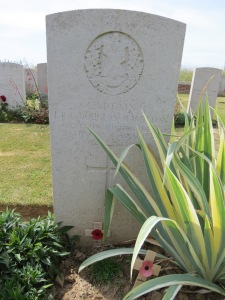| 18th September 1918
Arthur Clegg-Hill, DSO, C Social 1891. Lt-Col (commanding), 12th Bn Cheshire Regt. Killed in action, Battle of P Ridge, Macedonia, Greece
At school, he played for the Soccer XI. On leaving school, he became a career soldier and served in the 2nd South African War. In 1902, he became a farmer in South Africa. He returned to service on the outbreak of WW1. He was twice mentioned in despatches and awarded the DSO.
His battalion was awarded the Croix de Guerre with Palm for the action at P Ridge:
Citation for the Croix de Guerre with Palm awarded to 12th Bn. Cheshire Regt.
A GALLANT CHESHIRE BATTALION. AWARDED THE CROIX DE GUERRE WITH PALM. On Sunday, March 2, the General Officer Commanding-in-Chief, British Salonika Force, on behalf of General Franchet d’Esperey, the G.O.C. in Command Allied Armies in the Orient, presented the 12th (Ser.) Battalion Cheshire Regiment with the Croix de Guerre with Palm, in recognition of their gallant conduct and magnificent attack on September 18, 1918. The battalion was mentioned in a French Army Order as “a marvellous battalion, which has shown the finest qualities of courage, enthusiasm, and endurance.” The order continues :- ” On September 18, 1918, gallantly led by Lt.-Col. the Hon. A. R. Clegg·Hill, D.S,O., in person, it rushed to the assault of a strongly fortified position, showing a magnificent spirit of self-sacrifice. In spite of a cross fire from artillery, trench mortar, and machine guns, and of the loss of its commanding officer, who fell mortally wounded, the battalion continued to advance, making light of its heavy casualties, and thereby giving a glorious example of heroism, and the loftiest traditions of the British Army.”
In the December dispatch of General Sir G. Milne, G.O.C. in Command, British Salonika Force, the battalion is again mentioned for its attack on the ” P” Ridge in September. “After severe fighting the 12th Battalion Cheshire Regiment succeeded in reaching the third line of trenches. At this point they came under a devastating machine gun fire, and, unable to make further progress, were eventually compelled to fall back to their original position. In their heroic attempt they had lost about 65 per cent. of their strength, including Lieutenant- Colonel the Hon. A. R, Clegg-Hill, D.S.O., who fell at the head of the battalion.”
Aged 41 |
|













